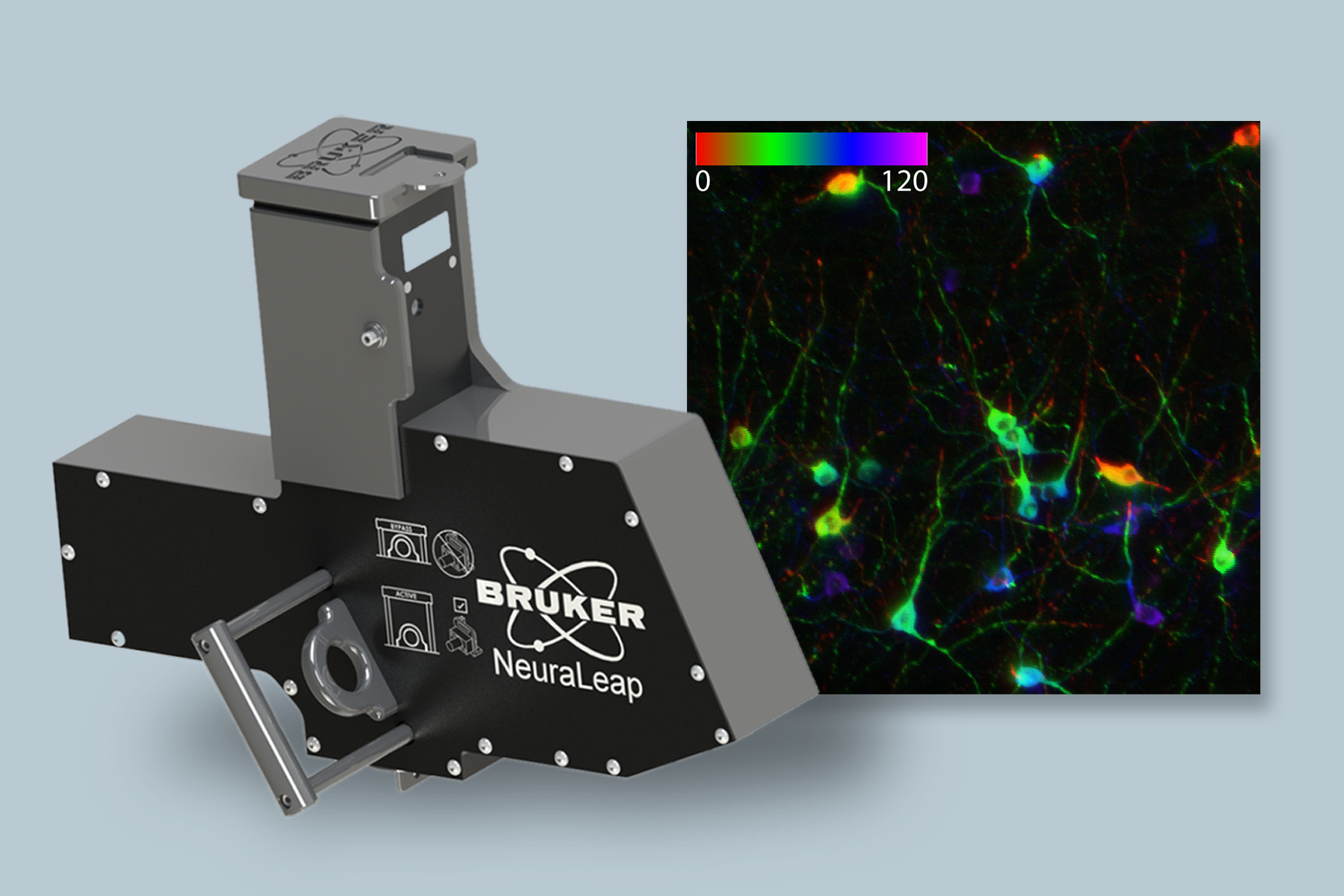
[ad_1]
Novel Use of Digital Micromirror Machine Allows Variable Depth-of-Area Assortment for Superior Neuroscience Analysis
Bruker‘s just lately launched NeuraLeap™ digital focusing module gives their flagship Ultima 2Pplus multiphoton microscopes the groundbreaking imaging pace to entry completely different layers of the cortex. In comparison with conventional focus strategies, the brand new module gives a 3 orders of magnitude enchancment of switching pace between discrete imaging planes. NeuraLeap can be particularly helpful for correlating the exercise of neuronal circuits throughout cortical layers, enabling researchers to extra comprehensively and exactly examine bigger neural community features.
 The NeuraLeap module (left) was used to scan (120 µm part) and color-code by depth the dopaminergic neurons of a mouse ventral tegmental space (proper). Picture credit score: Bruker
The NeuraLeap module (left) was used to scan (120 µm part) and color-code by depth the dopaminergic neurons of a mouse ventral tegmental space (proper). Picture credit score: Bruker
“My group is happy to have validated that with the NeuraLeap module on our Ultima 2Pplus, we had been capable of sequentially picture each layer 2 and 5 with zero delay between frames,” stated Lucas Pinto, M.D., Ph.D., assistant professor at Northwestern College. “This enables us to immediately observe the neural correlates of habits in these layers almost concurrently.”
“The Ultima 2Pplus microscopes are regularly enabling improvements to meet neuroscientists’ final need to picture neural exercise on the pace of real-time transmission,” added Xiaomei Li, Ph.D., Vice President and Basic Supervisor of Bruker’s Fluorescence Microscopy Enterprise. “NeuraLeap is one other vital development alongside this path. In mild of current neurotransmitter and calcium indicator enhancements, will probably be notably thrilling to see what researchers will uncover utilizing this new expertise.”
Concerning the NeuraLeap Module
The NeuraLeap module on Ultima 2Pplus multiphoton microscopes gives unprecedented imaging pace throughout a variety of depths with an prolonged depth-of-field laser excitation module and an ultrafast digital micromirror machine (DMD) chip. Thick volumes could be collected at excessive body charges as a result of elongated illumination spot generated by the module. Moreover, the DMD’s mirrors can digitally refocus the beam to pick out a number of spots alongside this quantity. Massive depth of area and multiplane sampling will enable researchers to concurrently correlate exercise throughout depths, whereas quick switching will enormously enhance the pace with which separate, arbitrary planes could be collected in sequence.
[ad_2]